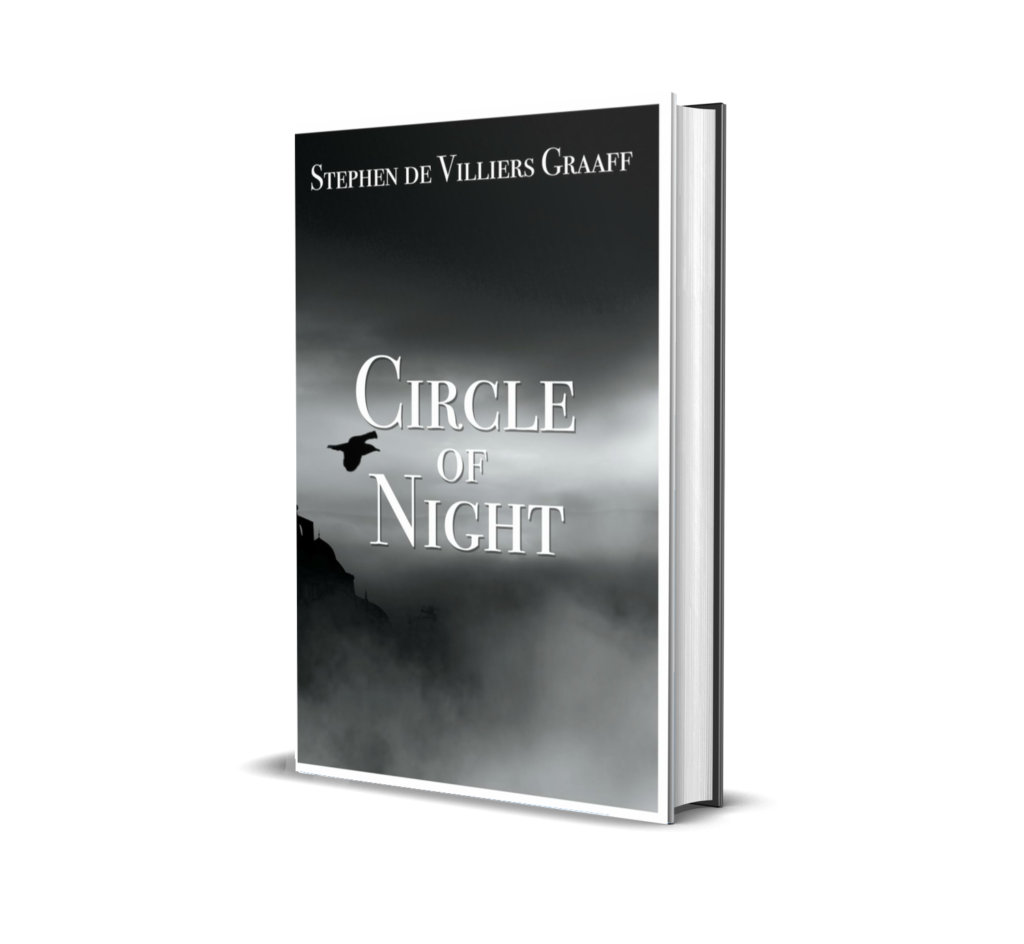Circle of Night
Author: Stephen De Villiers Graaff
Publisher: Self-published
Rating: 4/5
In his dark fantasy debut, De Villiers Graaff introduces readers to the storm-battered seaport of Sarsini, a bustling hub in the Sarsinian Kingdom that becomes a breeding ground for violence and terror. The novel intricately weaves the stories of three main characters: Dacian, an assassin on the run after avenging the murder of his family; Panos, a former Kingdom officer haunted by the death of his comrades; and Kratos, a relentless hunter in service of the duke. Their paths intersect in a city teetering on the brink of chaos, overseen by the enigmatic and powerful “Ascendant of Shadow”.
Graaff’s storytelling is commendable for its rich, atmospheric world-building. The city of Sarsini is vividly brought to life, with its nearly million citizens, its ceaseless rain, and its constant threat of supernatural dangers. One of the novel’s strongest points is the author’s attention to detail in creating a complex, immersive environment. The atmosphere is further enriched by the presence of the Ascendants, whose mysterious and often malevolent influence adds a layer of intrigue and foreboding.
The plot is a thrilling tapestry of intertwined destinies, where the lives of an assassin, a deserter, and a smuggler converge amidst promises of sanctuary, riches, and escape. Their backstories are meticulously revealed, each laden with personal scars and losses, creating a deep sense of empathy and connection. The immortal Ascendants’ machinations add complexity and intrigue, weaving their fates together in an inescapable knot.
The novel excels in character development. Each figure, from the central trio to the numerous supporting characters, is meticulously crafted with distinct backgrounds and motivations. Graaff’s ability to delve deep into their psyches ensures readers are invested in their fates. The frequent flashbacks, which might disrupt the flow in lesser hands, are handled adeptly, providing crucial context and depth to the characters’ current predicaments.
However, this meticulous development also contributes to the story’s leisurely pace. At times, the narrative lingers on subplots and side characters, leading to stretches where the central figures of Dacian and Panos are absent. While these diversions enrich the world and add to the overall tapestry of the story, they can also slow down the momentum, making some sections feel prolonged.
Introducing new characters throughout the book can be jarring, occasionally disrupting the narrative flow. Nevertheless, Graaff’s skill in fleshing out these characters often compensates for this issue, ensuring their eventual roles in the story are meaningful and impactful. The sudden deaths or shocking actions of well-defined characters keep readers on edge, highlighting the novel’s unpredictable nature.
One of the standout aspects of the book is its handling of supernatural elements. The creatures that emerge from the mysterious portals are genuinely terrifying, with their relentless hunger and brutal assaults adding high stakes to the narrative. These encounters are described with visceral detail, ensuring the danger feels immediate and real.
In summary, De Villiers Graaff’s debut is a meticulously crafted fantasy tale that shines with its detailed world-building, complex characters, and gripping supernatural elements. While the story’s pace can be slow and the introduction of numerous characters may disrupt the narrative flow, the book’s strengths in atmosphere and depth make it a compelling read. The ending, which leaves many avenues open for exploration, promises an exciting continuation in the sequel.
Worth a try!
Find this book here.

